
With the creation of Pakistan in 1947, Karachi became not only the capital and premier port of the new country but also a centre for industry, business, and administration. Although Rawalpindi became the interim capital in 1959, before the capital permanently moved to Islamabad in 1969, Karachi maintained its pre-eminence as Pakistan’s business and industrial hub. In a development typical of many postcolonial megacities, this premier economic status subsequently contributed to an enormous increase in Karachi’s population, as a huge influx of job-seeking immigrants from rural areas nearly doubled the city’s size in the final two decades of the 20th century. With the city’s infrastructure already overburdened to the breaking point, fully one-third of these new arrivals were forced to take up residence in urban shantytowns known as katchi abadis, which ordinarily lacked power, running water, or sanitation. The delivery of basic city services remained an ongoing problem for Karachi into the 21st century. Karachi is the capital of the Pakistani province of Sindh. Situated on the Arabian Sea, Karachi serves as a transport hub, and is home to Pakistan's two largest seaports, the Port of Karachi and Port Bin Qasim, as well as the busiest airport in Pakistan. Though the Karachi region has been inhabited for millennia, the city was founded as the fortified village of Kolachi in 1729. Karachi is one of the world's fastest growing cities, and has communities representing almost every ethnic group in Pakistan.

The most striking aspect of Karachi’s layout is the west-to-east parallel alignment of the four arterial roads—Nishter Road (formerly called Lawrence Road), Mohammed Ali Jinnah Road (formerly Bandar Road), Shahrah-e-Liaquat (Frere Road), and I.I. Chundrigar Road (McCleod Road). Beginning at Merewether Tower in the vicinity of the port, these roads run through the centre of the city. Several roads, such as Napier Road, Dr. Zia-ud-din Ahmed Road (Kutchery Road), and Garden Road, cut perpendicularly across these arteries from north to south.


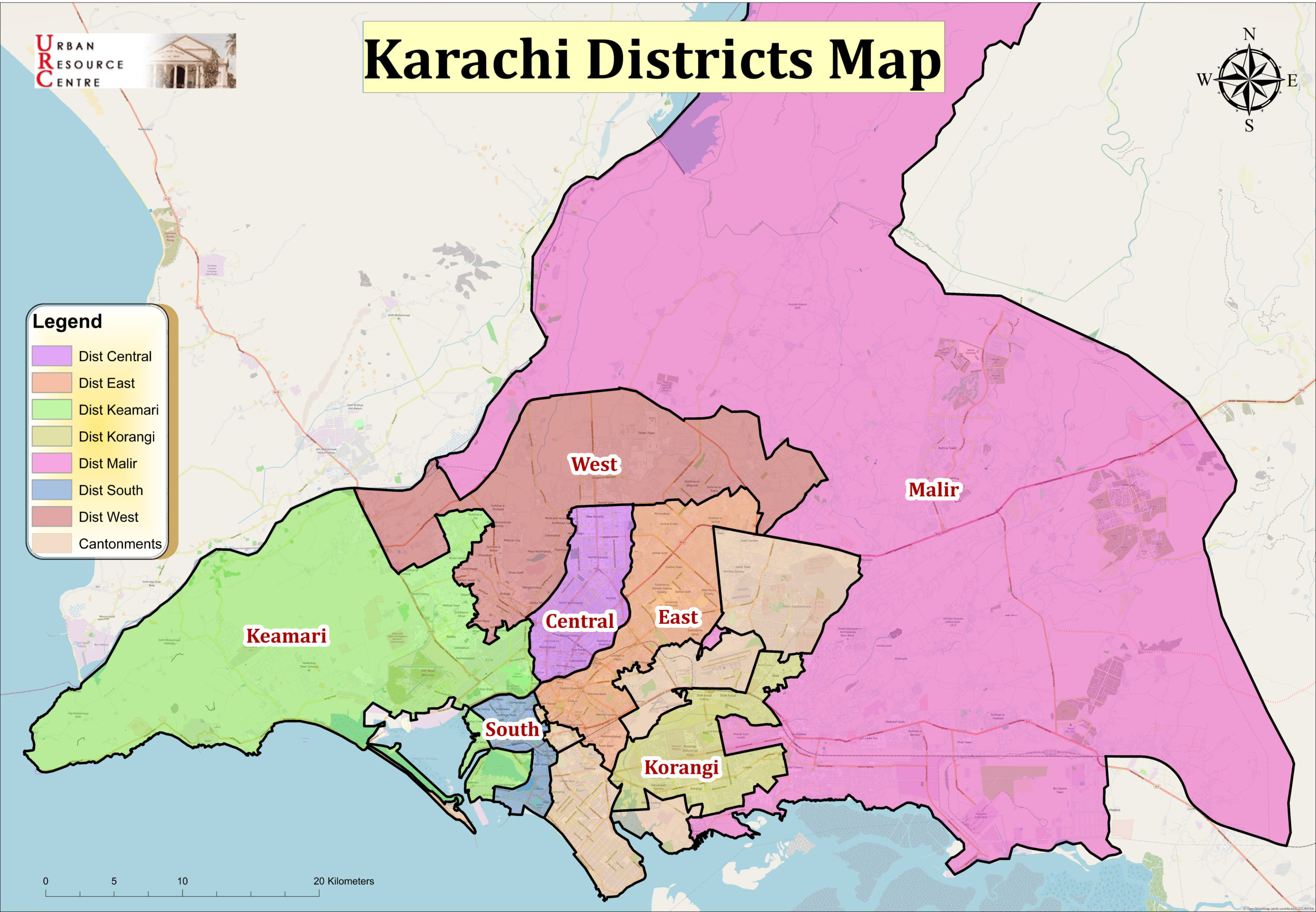

Shara-e-Faisal Road

I.I. Chundrigar Road

M A Jinnah Road

Shara-e-Liaquat Road
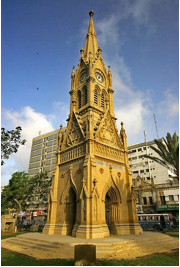
Merewether Tower

Napier Road
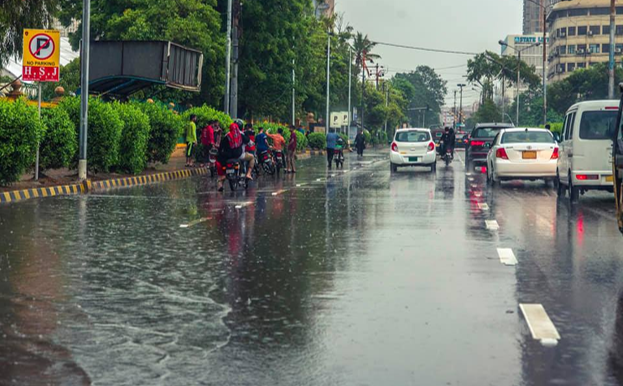
Zia-uddin Road

Karsaz Road

The old town lies near the port, to the north of M.A. Jinnah Road, and with extensions stretching along the material roads for over a mile; unplanned, it is reminiscent of medieval towns of the Middle East or Europe. East of the old town are such districts as the Drigh Cantonment, the Civil Lines (residential areas for senior civil service officers), and the Saddar Bazar. This area is planned on a checkerboard pattern and shows European characteristics. Beyond this stretch several radial roads, along which growth has taken the form of neighbourhood units; each unit is laid out with straight, broad roads connected by smaller streets.
The city proper has old and decayed buildings, occupied by members of the middle- and lower-income groups.

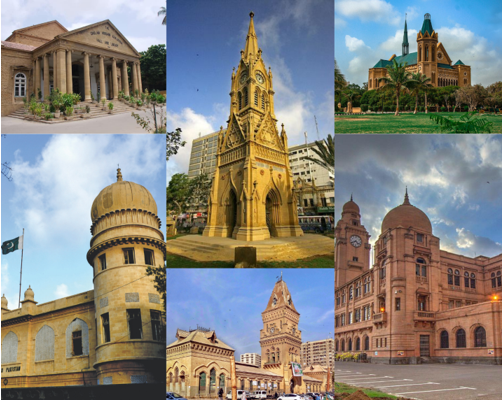
The city is administered by five institutions, the heads of which are appointed by the government. The Karachi Municipal Corporation, constituted in 1852, performs a large number of civic functions affecting more than three-fourths of the population of Greater Karachi. The Korangi-Lāndhi and Drigh-Malīr municipal committees were established in 1966 and 1970, respectively, to provide civic facilities to the suburban areas developed after 1947. The Karachi Cantonment Board is the administrative body for the areas where the military are quartered. The Karachi Port Trust administers the affairs of the port and is entrusted with the development and maintenance of the harbour.
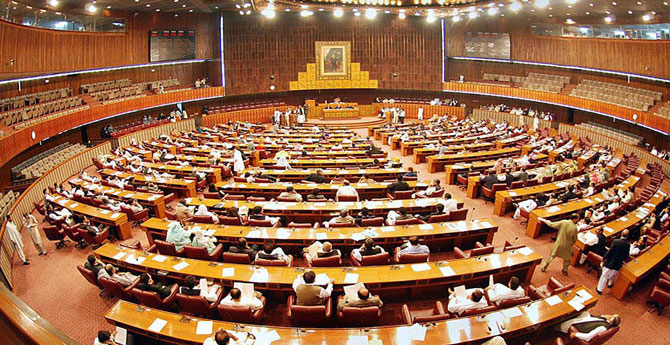
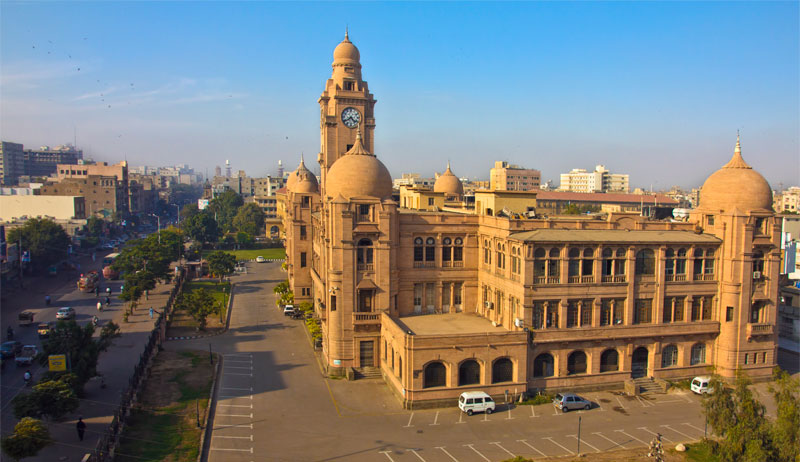
The three main sources of the city’s water supply are Lake Hāleji, 55 miles (90 km) away, fed by the Indus River; wells that have been sunk in the dry bed of the Malīr River, 18 miles away; and Lake Kalri, 60 miles away, also fed by the Indus waters. Although the city’s water mains stretch for many miles, some of the outer areas, such as Lāndhi, Malīr, New Karachi, and Mauripur, still have an acute water shortage. The Karachi Electric (K-Electric) is responsible for electricity services. It has several power stations located in the city; these stations use natural gas, diesel oil, or both. A nuclear power station is operated at Paradise Point. Karachi Municipal Corporation maintains a fleet of vehicles for refuse collection, night soil removal, dog catching, and antimalarial and antifly operations. Sweepers are employed to clean the streets. Sewage is disposed of by two underground drainage systems, and there are two sewage treatment plants, one serving the city proper and the other the outlying areas. There are several well-equipped firefighting stations; separate fire brigade units are attached to the railway network. In addition, the Port Trust and Pakistan International Airlines (PIA) have services that can be used in emergencies. The police are administered by the Sindh provincial administration; the inspector general of police is assisted by a force of more than 1,100.